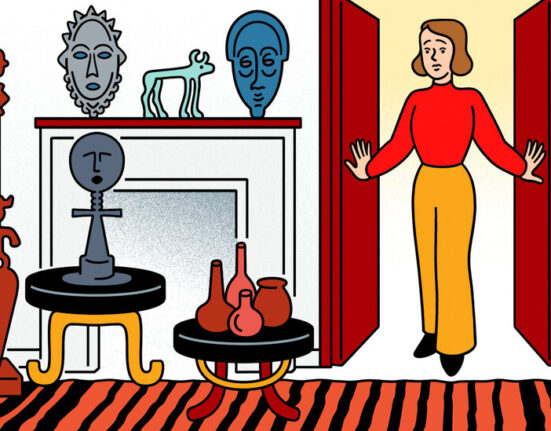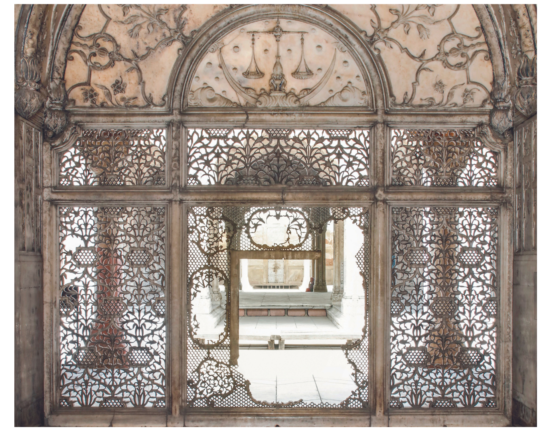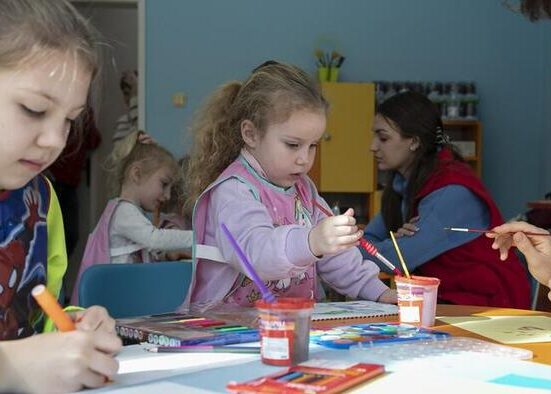Henshilwood, C., d’Errico, F. & Watts, I. Engraved ochres from the Middle Stone Age levels at Blombos Cave, South Africa. J. Hum. Evol. 57, 27–47 (2009).
Henshilwood, C. et al. A 100,000-year-old ochre processing workshop at Blombos cave, South Africa. Science 334, 219–222 (2011).
Texier, P.-J. et al. A Howiesons Poort tradition of engraving ostrich eggshell containers dated to 60,000 BP at Diepkloof Rock Shelter, South Africa. Proc. Natl. Acad. Sci. 107, 6180–6185 (2010).
Hoffmann, D. L. et al. U-Th dating of carbonate crusts reveals Neanderthal origins of cave art. Science 359, 912–915 (2018).
Bahn, P.G. Images of the Ice Age (Oxford University Press, 2016).
Guthrie, R.D. The Nature of Palaeolithic Art (University of Chicago Press, 2005).
Leroi-Gourhan, A. L’art des cavernes: atlas des grottes ornées paléolithiques françaises. (Imprimerie nationale, 1984).
Marshack, A. The female image: A ‘Time-factored’ symbol. A study in style and aspects of image use in the Upper Palaeolithic. Proc. Prehist. Soc. 57(1), 17–31 (1991).
Tosello, G. Pierres Gravées de Périgord Magdalénien: Art, Symboles, Territoires (CNRS Editions, 2003).
Pastoors, A. & Weniger, G. C. Cave art in context: Methods for the analysis of the spatial organization of cave sites. J. Archaeol. Res. 19(4), 377–400 (2011).
Leroi-Gourhan, A. Préhistoire de l’art occidental, 2nd ed. (Mazenod, 1971).
Sauvet, G. & Wlodarczyk, A. Eléments d’une grammaire formelle de l’art pariétal paléolithique. L’Anthropologie 99(2–3), 193–211 (1995).
Chalmin, E., Menu, M. & Vignaud, C. Analysis of rock art painting and technology of Palaeolithic painters. Meas. Sci. Technol. 14, 1590–1597 (2003).
d’Errico, F. et al. The technology of the earliest European cave paintings: El Castillo Cave, Spain. J. Archaeol. Sci. 70, 48–65 (2016).
Barton, C. M., Clark, G. A. & Cohen, A. E. Art as information: Explaining Upper Palaeolithic art in Western Europe. World Archaeol. 26(2), 185–207 (1994).
Clark, G.A., Barton, C.M. & Cohen, A. Explaining Art in the Franco-Cantabrian Refugium: An Information Exchange Model. In: Debating Complexity. In Proceedings of the 26th Annual Chacmool Conference. (eds. Meyer, D.A., Dawson, P.C. & Hanna, D.T.) (Archaeological Association of the University of Calgary, 1996).
Gamble, C. The social context for European Palaeolithic art. Proc. Prehist. Soc. 57(1), 3–15 (1991).
Clottes, J. Why did they draw in those caves?. Time Mind 6(1), 7–14 (2013).
Sauvet, G., Layton, R., Lenssen-Erz, T., Taçon, P. & Wlodarczyk, A. Thinking with animals in Upper Palaeolithic rock art. Camb. Archaeol. J. 19(3), 319–336 (2009).
Lewis-Williams, J.D. Harnessing the Brain: Vision and Shamanism in Upper Paleolithic Western Europe. In: Beyond Art: Pleistocene Image and Symbol. (eds. Conkey, M., Soffer, O., Stratmann, D. & Jablonski, N.G.) (University of California Press, 1997).
Lewis-Williams, J. D. Agency, art and altered consciousness: A motif in French (Quercy) Upper Palaeolithic parietal art. Antiquity 71, 810–830 (1997).
Lewis-Williams, J. D. & Clottes, J. The mind in the cave—The cave in the mind: Altered consciousness in the Upper Palaeolithic. Anthropol. Conscious. 9(1), 13–21 (1998).
Lewis-Williams, J. D. Neuropsychology and Upper Palaeolithic art: Observations on the progress of altered states of consciousness. Camb. Archaeol. J. 14(1), 107–111 (2004).
Conkey, M., Strathmann, D. & Jablonski, N. Beyond Art: Pleistocene Image and Symbol (University of California Press, 1997).
Janik, L. The Archaeology of Seeing. Science and Interpretation, the Past and Contemporary Visual Art (Routledge, 2020).
Gell, A. Art and Agency. An Anthropological Theory (Oxford University Press, 1998).
Pettitt, P., Meyering, L.-E. & Kentridge, R. Bringing science to the study of ancient senses: Archaeology and visual psychology. World Archaeol. 52(2), 183–204 (2021).
Hodgson, D. Seeing the ‘Unseen’: Fragmented cues and the implicit in Palaeolithic art. Camb. Archaeol. J. 13(1), 97–106 (2003).
Hodgson, D. Altered states of consciousness and Palaeoart: An alternative neurovisual explanation. Camb. Archaeol. J. 16(1), 27–37 (2006).
Hodgson, D. The visual dynamics of Upper Palaeolithic cave art. Camb. Archaeol. J. 18(3), 341–353 (2008).
Hodgson, D. Emanations of the mind: Upper Paleolithic art as a visual phenomenon. Time Mind 5(2), 185–193 (2012).
Hodgson, D. & Pettitt, P. The origins of iconic depictions: A falsifiable model derived from the visual science of palaeolithic cave art and world rock art. Camb. Archaeol. J. 28(4), 591–612 (2018).
Meyering, L.-E., Kentridge, R. & Pettitt, P. The visual psychology of European Upper Palaeolithic figurative art: Using Bubbles to understand outline depictions. World Archaeol. 52(2), 205–222 (2021).
Tylén, K. et al. The evolution of early symbolic behavior in Homo sapiens. PNAS 117(9), 4578–4584 (2020).
Stout, D., Toth, N., Schick, K. & Chaminade, T. Neural correlates of Early Stone Age toolmaking: Technology, language and cognition in human evolution. Philos. Trans. R. Soc. Lond. B 363(1499), 1939–1949 (2008).
Vasser, M. & Aru, J. Guidelines for immersive virtual reality in psychological research. Curr. Opin. Psychol. 36, 71–76 (2020).
Gall, D., Roth, D., Stauffert, J.-P., Zarges, J. & Latoschik, M. E. Embodiment in virtual reality intensifies emotional responses to virtual stimuli. Front. Psychol. 12, 674179 (2021).
Slater, M. Immersion and the illusion of presence in Virtual Reality. Brit. J. Psychol. 109, 431–433 (2018).
Smith, S. A. & Mulligan, N. W. Immersion, presence, and episodic memory in virtual reality environments. Memory 29(8), 983–1005 (2021).
Keenaghan, S., Polaskova, M., Thurlbeck, S., Kentridge, R. W. & Cowie, D. Alice in Wonderland: The effects of body size and movement on children’s size perception and body representation in virtual reality. J. Exp. Child Psychol. 224, 105518 (2022).
Peeters, D. Virtual reality: A game-changing method for the language sciences. Psychon. Bull. Rev. 26, 894–900 (2019).
Bouchard, S. & Rizzo, A. Applications of virtual reality in clinical psychology and clinical cognitive neuroscience—An introduction. In: Virtual Reality for Psychological and Neurocognitive Interventions. Virtual Reality Technologies for Health and Clinical Applications (eds. Rizzo, A. & Bouchard, S.) 1–13. (Springer, 2019).
Emmelkamp, P. M. G. & Meyerbröker, K. Virtual Reality Therapy in Mental Health. Annu. Rev. Clin. Psychol. 17, 495–519 (2021).
Riva, G. Virtual reality in psychotherapy. Cyberpsychol. Behav. 8(3), 220–230 (2005).
Riva, G. Virtual reality: An experiential tool for clinical psychology. J. Guid. Counsel. 37(3), 337–345 (2009).
Reger, G. M. & Gahm, G. A. Virtual reality exposure therapy for active duty soldiers. J. Clin. Psychol. 64(8), 940–946 (2008).
Anderson, N. C. & Bischof, W. F. Eye and head movements while looking at rotated scenes in VR. In: Session “Beyond the screen’s edge” at the 20th European Conference on Eye Movement Research (ECEM) in Alicante, 19.8.2019. J. Eye Move. Res. 12(7), 66 (2019).
Anderson, N. C., Bischof, W. F., Foulsham, T. & Kingstone, A. Turning the (virtual) world around: Patterns in saccade direction vary with picture orientation and shape in virtual reality. J. Vis. 20(8), 1–19 (2020).
Clay, V., König, P. & König, S. Eye tracking in virtual reality. J. Eye Move. Res. 12(1), 1–18 (2019).
Sipatchin, A., Wahl, S. & Rifai, K. Eye-tracking for low vision with virtual reality (VR): Testing status quo usability of the HTC Vive Pro Eye. Healthcare 9(2), 1–15 (2021).
Wilson, C. J. & Soranzo, A. The use of virtual reality in psychology: a case study in visual perception. Comput. Math. Methods Med. 2015, 1–7 (2015).
Addison, A. C. Virtual heritage—Technology in the service of culture. In Proceedings of the 2001 Conference on Virtual Reality, Archeology and Cultural Heritage. November 2001, 343–354 (2002).
Bruno, F. et al. From 3D reconstruction to virtual reality: A complete methodology for digital archaeological exhibition. J. Cult. Herit. 11(1), 42–49 (2010).
Ellenberger, K. Virtual and augmented reality in public archaeology teaching. Adv. Archaeol. Pract. 5(3), 305–309 (2017).
Cassidy, B., Sim, G., Robinson, D. W. & Gandy, D. A virtual reality platform for analyzing remote archaeological sites. Interact. Comput. 31(2), 167–176 (2019).
Needham, A., Wisher, I., Langley, A., Amy, M. & Little, A. Art by Firelight? Using experimental and digital techniques to explore Magdalenian engraved plaquette use at Montastruc (France). PLoS ONE 17(4), e0266146 (2022).
Wisher, I., Pettitt, P. & Kentridge, R. Conversations with caves: The role of pareidolia in the Upper Palaeolithic figurative art of Las Monedas and La Pasiega (Cantabria, Spain). Camb. Archaeol. J. 66, 1–24 (2023).
Campanaro, D. M. & Landeschi, G. Re-viewing Popeian domestic space through combined virtual reality-based eye tracking and 3D GIS. Antiquity 96(386), 479–486 (2022).
Tomonaga, M. & Kawakami, F. Do chimpanzees see a face on Mars? A search for face pareidolia in chimpanzees. Anim. Cognit. 26, 885–905 (2023).
Etchebehere, S. & Fedorovskaya, E. On the role of color in visual saliency. In Proceedings of the IS&T International Symposium on Electronic Imaging: Human Vision and Electronic Imaging 2017, 58–63 (2017).
Pike, A. W. G. et al. U-series dating of Paleolithic art in 11 caves in Spain. Science 336(6087), 1409–1413 (2012).
Ripoll López, S., Bayarri-Cayón, V., Castillo-López, E., Latova-Fernández Luna, J. & Muñoz-Ibañez, F. J. A chronological proposal for El Castillo Cave (Puente Viesgo, Cantabria) based on its iconographic stratigraphy. BSAA arqueología LXXXV, LXXXVI49-176 (2021).
Valladas, H., Tisnérat-Laborde, N., Cachier, H., Arnold, M., Bernaldo de Quirós, F., Cabrera-Valdés, V., et al. Radiocarbon AMS Dates for Paleolithic Cave Paintings. Radiocarbon 43, 977–986 (2001).
Rouzaud, F. L. Paléospéléologie ou: l’approche globale des documents anthropiques et paléontologiques conservés dans le karst profond. Quaternaire 8, 257–265 (1997).
Medina-Alcaide, A. et al. The conquest of dark spaces: An experimental approach to lighting systems in Paleolithic caves. PLoS ONE 16(6), 1–30 (2021).
Bednarik, R. G. Pareidolia and rock art interpretation. Anthropologie 55(1/2), 101–117 (2017).
Melcher, D. & Bacci, F. The visual system as a constraint on the survival and success of specific artworks. Spat. Vis. 21(3–5), 347–362 (2008).
Zhou, L.-F. & Meng, M. Do you see the “face”? Individual differences in face pareidolia. J. Pac. Rim Psychol. 14, 1–8 (2020).
Fritz, C., Tosello, G. & Conkey, M. W. Reflections on the identities and role of the artists in European Paleolithic societies. J. Archaeol. Method Theory 23, 1307–1332 (2016).
Rivero, O. & Garate, D. Motion and gesture: Analysing artistic skills in Palaeolithic art. J. Archaeol. Method Theory 27, 561–584 (2020).
Fazenda, B. et al. Cave acoustics in prehistory: Exploring the association of Palaeolithic visual motifs and acoustic response. J. Acoust. Soc. Am. 142, 1332–1349 (2017).
Intxaurbe, I. et al. Hidden images in Atxurra Cave (Northern Spain): A new proposal for visibility analyses of Palaeolithic rock art in subterranean environments. Quat. Int. 566–567, 163–170 (2020).
Jouteau, A. et al. Choosing rock art locations: Geological parameters and social behaviours. The example of Cussac Cave (Dordogne, France). J. Archaeol. Sci. 105, 81–96 (2019).
Pettitt, P., MaximianoCastillejo, A., Arias, P., OntañónPeredo, R. & Harrison, R. New views on old hands: The context of stencils in El Castillo and La Garma caves (Cantabria, Spain). Antiquity 88(339), 47–63 (2014).
Pettitt, P., Leluschko, S., & Sakamoto, T. Light, human evolution, and the palaeolithic. In The Oxford Handbook of Light in Archaeology (eds. Papadopoulos, C. & Moyes, H.) pg. 19–42. (Oxford University Press, 2017).
Bernaldo de Quirós, F., Castaños, P., Maíllo-Fernández, J-M. & Neira, A. The Solutrean Unit of El Castillo Cave, Spain. In: Forgotten times and spaces: New perspectives in paleoanthropological, paleoetnological and archaeological studies. (eds. Sázelová, S., Novák, M. & Mizerová, A.) (Institute of Archaeology of the Czech Academy of Sciences, Masaryk University, 2015).
Marín-Arroyo, A. B. Human response to Holocene warming on the Cantabrian Coast (northern Spain): An unexpected outcome. Quat. Sci. Rev. 81, 1–11 (2013).
Garbin, S.J., Komogortsev, O., Cavin, R., Hughes, G., Shen, Y., Scheutz, I., et al. Dataset for eye tracing on a virtual reality platform. In ETRA ’20 Full Papers: ACM Symposium on Eye Tracking Research and Applications vol 13, 1–10 (2020).






